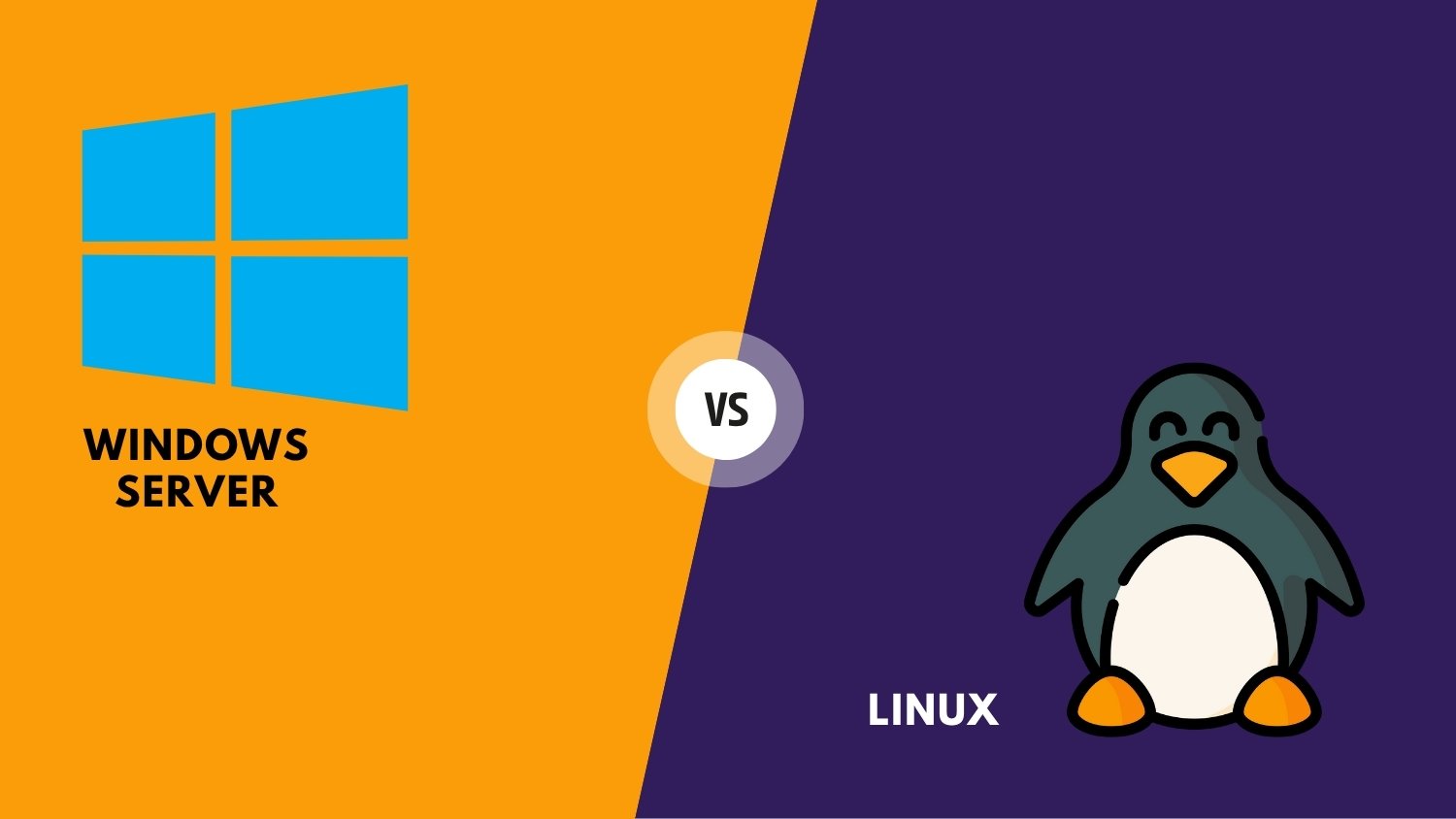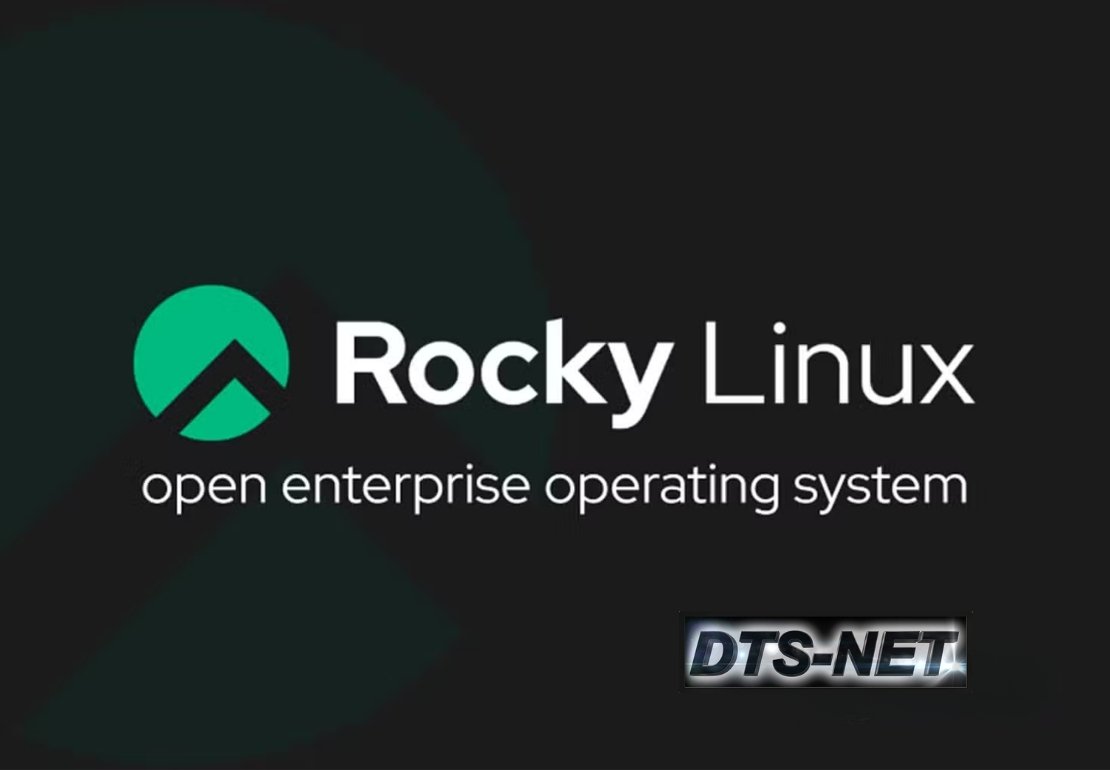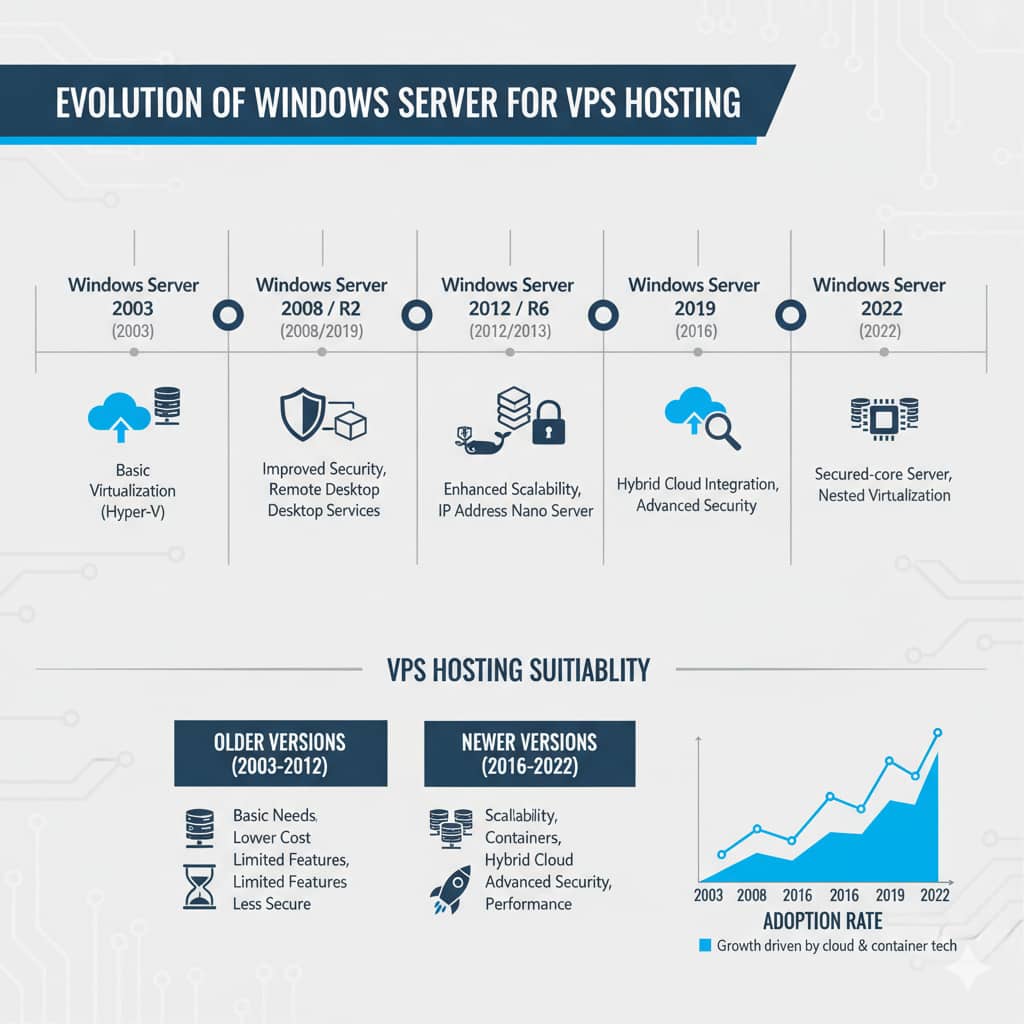Are you considering migrating from shared to VPS hosting? Or have you decided to dive right in with a virtual private server, but are now scratching your head over which operating system (OS) to install?
No matter where you're starting from, choosing the right OS is one of the first things you'll need to figure out when setting up your VPS. But with all the numerous options available, selecting the best OS for VPS can feel overwhelming.
Should you go with a Windows server or a Linux VPS? Are those the only options? And which one is right for you? These are some of the questions that might be weighing on your mind, especially if you're not tech-savvy with servers and web hosting.
If you're unsure which OS to choose for your VPS, this guide will help you make an informed decision. By the end, you'll discover the top options, when they'd be ideal, and how to make your final choice.
So, let's kick off with what one should bear in mind when choosing a VPS operating system.
Choosing the Best OS for VPS: 6 Key Aspects to Consider
Choosing the wrong server OS can lead to unnecessary complications down the road. It might constrain performance, limit the software you can run, or even compromise security. These are issues no one wants to deal with, especially when you're trying to manage a VPS smoothly.
So, what makes an OS the right fit for your VPS? It really all boils down to how well it aligns with your technical needs and hosting requirements. Considering the following key factors will help you zero in on the best OS for VPS that suits your setup..
1 Performance
When deciding whether to choose shared vs VPS hosting, one of the reasons most people opt for the latter is better performance. However, selecting the wrong operating system for your virtual server can erode that advantage and leave your website running sluggishly.
A server OS often supports multiple users or connections at once, so it needs to perform at a higher level than a typical desktop OS. That's why picking one that maximizes your VPS's speed and efficiency is key.
Linux distributions like Ubuntu and AlmaLinux are lightweight because they rely solely on command-line interfaces. This setup, often called a headless environment, eliminates the need for a graphical interface and reduces background processes. As a result, this frees up more CPU and memory for your website to run faster and smoother.
On the other hand, the Windows Server typically consumes more resources due to its GUI (Graphical User Interface) processes, which can weigh down performance, especially when running multiple tasks or on servers with limited capacity.
Another performance-related advantage of a Linux VPS is uptime. Unlike Windows Server, it will perform most updates without requiring a full restart. That means fewer breaks in service and more consistent website availability.
💡 Quick Tip: Whichever server OS you choose, always check the system requirements before installing. Ensure your VPS's RAM, storage, CPU, and other specs meet or exceed the OS's minimum requirements to avoid performance bottlenecks.
Choosing the best OS for VPS isn't just about speed. You also need to ensure it supports the applications you want to run.
Think about what will be powering your website. Maybe it's a specific language runtime like Node.js, a database like PostgreSQL, a preferred control panel, or custom business software.
Whatever applications you intend to run on your website, make sure that the operating system your server will run on supports them. For example, if you want to set up a WordPress site, you'll need a VPS OS that plays well with a web server like Apache or Nginx, alongside PHP and MySQL or MariaDB.
Keep in mind that not every server OS supports every web application, so double-check compatibility before committing. Otherwise, you might end up wrestling with workarounds.
Generally, Windows Server keeps you in the Microsoft ecosystem. It's suited for websites built on the ASP.NET framework, MS SQL, and other Microsoft-centric solutions.
On the other hand, a Linux VPS gives you more freedom and flexibility, especially if you don’t plan to use Microsoft tech. Since its source code is open, you can even customize Linux for specific needs like tightening security, speeding up performance, or running specialized apps. It also works well with many control panels, open-source tools, and popular software stacks like LAMP — Linux, Apache, MySQL, and PHP. This setup powers many websites and is a solid choice for common web apps.
Ultimately, the best OS for VPS depends on your specific needs and the software you plan to run. Choose one that works well with your applications and future development plans.
3 Ease of Use
Next, ease of use is essential, especially if you have limited experience with server management. Since you'll interact with the server OS regularly (even if just for updates, installs, or troubleshooting), it helps if you'll find it easy to interact with the system.
A Linux VPS typically relies on a text-based command-line interface (CLI), often accessed remotely through Secure Shell (SSH) protocol, which can feel intimidating if you're a beginner. However, some Linux distributions offer optional graphical interfaces. Just keep in mind that these can consume more resources and affect performance.
On the other hand, Windows VPS come with a graphical user interface (GUI) by default. As such, this makes it easier to navigate, especially if you're already familiar with the desktop version.
If ease of use is important, think about the learning curve of each server OS, as it can range from steep to gentle. Either way, having plenty of helpful resources will make the process much easier.
4 Support and Community

When technical issues arise with your web server, having reliable support can make all the difference. That's why it's essential to consider the level of assistance available for your chosen server OS.
Windows VPS users benefit from official Microsoft support and dedicated assistance. However, this comes with licensing costs or enterprise-level support subscriptions.
On the other hand, open-source Linux VPS servers rely heavily on community-driven support. While there's no central help desk, the wealth of online forums, detailed documentation, and active developer communities often make problem-solving faster and more flexible.
💡 Quick Tip: If you're new to server management, see if your hosting provider offers managed VPS plans or extra support for updates, security, and troubleshooting.
5 Security
Security is one of the most important factors when choosing the best OS for VPS. After all, your server will likely store sensitive data or power critical applications.
Considered the more secure option, Linux benefits from rapid community patches due to its open-source nature. As such, this leads to less vulnerability. Plus, it gives users more control to fine-tune security settings manually or use built-in security tools like SELinux and Firewalld.
Windows Server isn’t inherently less secure either. But unlike Linux, security patches are managed in-house by Microsoft and released on a set schedule. With tools like Windows Defender for Endpoint and BitLocker for Server, websites in the Microsoft ecosystem can still maintain a strong security posture. Still, Windows servers tend to be targeted more often by hackers, mainly due to popular attack surfaces like RDP and the fact that enterprise systems running Windows are lucrative targets.
💡 Quick Tip: No matter which VPS OS you choose, always enable automatic security updates and review firewall settings to reduce cybersecurity vulnerabilities.
6 Cost
Cost is another important factor when choosing an operating system for your VPS.
Most Linux distributions — like Ubuntu, Debian, and Rocky Linux — are open-source and free to use. As such, they're a great choice for users looking to minimize expenses.
Windows Server, on the other hand, comes with licensing fees that make it more expensive. Often, only large organizations typically have the budget for it. Still, if your setup relies on Microsoft-based applications, be sure to factor in the extra cost that comes with this option.
Windows vs Linux for VPS

Linux and Windows collectively power over 67% of all websites, making them the most popular operating systems for web servers. Your VPS decision will probably come down to either of the two. With that in mind, here’s a quick side-by-side look at how these two platforms stack up:
| Linux VPS | Windows VPS |
|---|---|
| Free (open-source) | Licensing fees apply |
| Best for open-source stacks (e.g. LAMP) | Ideal for ASP.NET, MS SQL, RDP |
| Requires familiarity with command line interface | More intuitive GUI, familiar for Windows users |
| Lightweight and resource-efficient | Heavier with higher system demands |
| Fast community-driven security patching | Bugs fixed regularly by Microsoft team |
| Offers greater software compatibility | Best suited for Microsoft ecosystem |
Top 7 Operating Systems for Linux VPS
Now that you know what to look for in a VPS OS, let's dive into the most popular choices in the Linux world. Each distribution, or "distro," has its own philosophy, strengths, and ideal use case. Here’s a look at the top contenders to help you choose the best OS for VPS, especially if you’re going with Linux.
1. Ubuntu Server
Ubuntu is arguably the most popular and recognizable Linux VPS distribution in the world. Backed by the company Canonical, it’s based on Debian but has a more predictable release schedule and a massive, user-friendly community. It's an excellent all-rounder and a fantastic starting point for newcomers.
Best Use Cases: General-purpose web hosting, application development, cloud deployments, and for users who are new to Linux servers.
System Requirements (Minimum): 1 GHz CPU, 1 GB RAM, 5 GB disk space.
Pros:
- Extremely large and active community for support.
- Excellent documentation.
- Wide software availability through its default repositories and PPAs (Personal Package Archives).
Cons:
- Some releases have been criticized for being less lightweight than alternatives.
- The inclusion of "Snap" packages can be a point of contention for some users.
2. Debian
Debian is one of the oldest and most respected Linux distributions, serving as the stable foundation for many others, including Ubuntu. Its primary focus is stability and adherence to the principles of free and open-source software. It’s a great VPS OS for users who prioritize security and long-term reliability.
Best Use Cases: Web servers, database servers, or any system where long-term stability and security are more critical than having the latest software features.
System Requirements (Minimum): 1 GHz CPU, 512 MB RAM, 10 GB disk space.
Pros:
- Rock-solid stability and reliability.
- Massive repository of software packages.
- Very lightweight and consumes minimal resources.
Cons:
- The "stable" branch uses older, well-tested software, which may not be ideal if you need cutting-edge versions.
- The release cycle is much slower than other distros.
3. AlmaLinux
AlmaLinux is a free, open-source RHEL clone designed to replace CentOS after its shift to CentOS Stream. Backed by the AlmaLinux OS Foundation, it offers enterprise-grade stability with long-term support — no licensing fees. It’s a strong contender if you're seeking the best OS for VPS environments that demand consistency and reliability.
Best Use Cases: Production servers, enterprise-grade applications, or users looking for a CentOS replacement with guaranteed long-term support.
System Requirements (Minimum): 1.1 GHz CPU, 1.5 GB RAM, 10 GB disk space.
Pros:
- 1:1 binary compatible with RHEL.
- Long support cycles (typically 10 years).
- Backed by a non-profit foundation with strong community governance.
Cons:
- Smaller community compared to Ubuntu or Debian.
- Not as beginner-friendly out of the box (requires more manual setup).
4. Rocky Linux

Rocky Linux is another enterprise-ready RHEL alternative built after CentOS was discontinued. It’s backed by the Rocky Enterprise Software Foundation and emphasizes community control and transparent development. As a server operating system, it’s well-suited for businesses that want full control and minimal downtime.
Best Use Cases: Stable and secure server deployments, especially for users or businesses migrating from CentOS.
System Requirements (Minimum): 1.1 GHz CPU, 1 GB RAM (2 GB recommended), 10 GB disk space.
Pros:
- Enterprise-grade, RHEL-compatible OS with long-term support.
- Founded by one of the original creators of CentOS.
- Ideal for users who want control and stability without vendor lock-in.
Cons:
- Like AlmaLinux, setup requires a bit more technical familiarity.
- Slightly newer than AlmaLinux, so ecosystem maturity is still catching up (but solid overall).
5. openSUSE Leap
openSUSE Leap is the community-supported counterpart to SUSE Linux Enterprise Server (SLES), offering much of the same stability and structure but without the commercial licensing costs. It’s ideal for users who want a reliable, enterprise-grade server OS with a friendlier entry point. Like SLES, it includes YaST — a powerful configuration and management tool that simplifies system administration.
Best Use Cases: General-purpose VPS hosting, development environments, and server setups that benefit from SUSE’s tools without requiring paid support.
System Requirements (Minimum): 2 GHz CPU, 2 GB RAM, 40 GB disk space.
Pros:
- Shares a core with SLES, offering enterprise-level stability.
- YaST makes system configuration and management easier.
- Regular release cycle with long-term support options.
Cons:
- Smaller community than Ubuntu or Debian.
- Software availability not as broad as Debian-based distros.
6. Fedora Server
Fedora is a community-driven distribution and the upstream source for RHEL. It’s known for adopting the latest technologies early and serves as a testing ground for features that may appear in enterprise distros later. It’s a flexible VPS operating system for developers who want to explore cutting-edge features.
Best Use Cases: Developers, testers, and enthusiasts who want to explore cutting-edge Linux technologies. Ideal for non-critical environments where stability isn’t the top priority.
System Requirements (Minimum): 1.5 GHz CPU, 2 GB RAM, 15 GB disk space.
Pros:
- Access to the latest software, kernels, and system innovations.
- Strong security features like SELinux enabled by default.
- Backed by Red Hat and an active community.
Cons:
- Short support lifecycle (typically around 13 months).
- Frequent updates can introduce instability, making it less ideal for production Linux VPS use.
7. CloudLinux OS

CloudLinux OS is a commercial Linux distribution built for web hosting providers. It enhances server stability and security in multi-tenant environments using a technology called LVE (Lightweight Virtual Environment). It's not a typical VPS OS, but shines in specialized hosting scenarios.
Best Use Cases: Shared and reseller hosting setups where tenant isolation, uptime, and resource management are priorities.
System Requirements (Minimum): 1.1 GHz CPU, 2 GB RAM, 40 GB disk space.
Pros:
- Prevents “noisy neighbor” problems by isolating users.
- Boosts security and uptime for shared hosting servers.
- Compatible with cPanel and other hosting panels.
Cons:
- Requires a commercial license.
- Not designed for standard single-user Linux VPS setups.
Best Windows Versions for VPS

If your project depends on Microsoft technologies, a Windows VPS can offer seamless compatibility and a familiar environment. Below are the most reliable options for Windows VPS hosting, especially when you're working with .NET applications, MSSQL databases, or remote desktop access.
- Windows Server 2025: Released in November 2024, this version builds on 2022’s stability while introducing enhanced security and AI-powered features. Ideal for forward-looking environments that want longevity and early access to new tech.
- Windows Server 2022 excels in security, offering advanced features like secured-core server technology. Its enhanced support for containers and hybrid cloud setups makes it a versatile choice for VPS hosting. Improved performance and stability further boost its appeal for demanding environments.
- Windows Server 2019: Still widely supported and suitable for legacy applications, this version is ideal for modern security and cloud integration. It offers top-tier protection with Advanced Threat Protection (ATP) and makes it easy to connect your VPS to Microsoft Azure services..
- Windows Server 2016 was the first version to fully support Docker, making it perfect for running modern, containerized applications. It also introduced Nano Server, an ultra-lightweight option that helps you get the most performance out of your VPS resources.
Bonus: Niche VPS OS Options
Some server operating systems are built for very specific scenarios. They’re not ideal for general use but perfect when the situation calls for them. Here are a few more options that might just be the best OS for VPS, depending on your project’s needs.
1. Arch Linux
Minimalist and fully customizable, Arch Linux is for advanced users who want complete control over their VPS OS. Best avoided by beginners, but powerful for developers who need precision.
Best Use Cases: Custom setups, advanced Linux users, DIY server builds
Why It’s Niche: Rolling release model and manual setup make it time-intensive.
2. Oracle Linux
Built by Oracle and optimized for their ecosystem, Oracle Linux is a RHEL-compatible server OS with optional enterprise support.
Best Use Cases: Oracle software stacks, enterprise-grade apps in Oracle environments
Why It’s Niche: Mostly relevant if you're using Oracle DB or tools.
3. CentOS Stream
The current upstream development branch for RHEL. It's more of a preview of what's coming next than a stable production OS.
Best Use Cases: Testing, staging environments, or non-critical apps
Why It’s Niche: Not as stable as its predecessors; not ideal for long-term production workloads.
4. FreeBSD
FreeBSD is a Unix-like OS known for its stability, security features, and advanced networking capabilities. While it’s not as widely adopted as Linux, it’s a solid choice for users looking for a reliable, secure, and fast server platform.
Best Use Cases: Security-focused setups, advanced networking, high-performance hosting
Why It’s Niche: Its ecosystem isn’t as large as Linux, but it’s highly robust and stable, with a dedicated community and strong performance in specialized environments.
5. OpenIndiana
A fork of the discontinued OpenSolaris, OpenIndiana is a cutting-edge OS featuring ZFS support and a strong focus on performance and scalability. It’s a great option for those who need a free, open-source Solaris alternative.
Best Use Cases: High-performance computing, storage-heavy applications, legacy Solaris environments
Why It’s Niche: Its user base is small, and compatible software is more limited compared to more mainstream systems like Linux or Windows.
Frequently Asked Questions
Most Linux VPS servers run on operating systems without a graphical user interface (GUI) by default, relying instead on a command-line interface (CLI) to optimize performance. However, while it's possible to install a GUI (like on Ubuntu Server or CentOS), it's not common due to the added resource usage.
For easier management, you can install a VPS control panel (like cPanel or Plesk), which provides a web-based GUI to manage your server, even if the OS itself is headless.
Yes, you can. Windows Server Core is a headless version of Windows Server that runs without a GUI and uses fewer system resources.
You can manage a headless Windows Server using PowerShell for command-line administration or Windows Admin Center for a web-based GUI that works remotely, without needing to install a GUI directly on the server. This makes it a solid option if you want better performance or a more lightweight setup.
Generally, yes, it's recommended to use the latest stable Windows Server version for your VPS. Newer versions offer enhanced security features, better performance, and improved compatibility with modern applications and cloud services. The main reasons to not use the latest would be if you have specific legacy applications that require an older version or if you're looking to minimize licensing costs for very basic needs. Still, the best practice is to keep using an older version of Windows Server that Microsoft still supports. For most users, though, the benefits of the latest version outweigh these concerns.
You can, but it's not a quick switch. Changing the OS usually means wiping the current server and reinstalling a new one from scratch. This process will delete all your data, so it's best done during initial setup or with proper backups in place.
For WordPress hosting, a Linux VPS with a LAMP or LEMP stack is usually the most efficient and cost-effective choice. Ubuntu Server and Debian are particularly popular due to their compatibility and strong community support, though other distros like AlmaLinux or Rocky Linux also work well if you're more comfortable with RHEL-based environments.
Final Thoughts: Choosing the Best OS for VPS
So, there you have it—everything you need to know about choosing the best OS for VPS. We’ve walked through the pros, cons, use cases, and key features of leading Linux VPS and Windows server choices — plus a few niche picks for more specialized needs.
Ultimately, the ideal VPS operating system comes down to compatibility, budget, and how hands-on you want to be.
Now that you're equipped with the knowledge to evaluate your options, go ahead and pick the server operating system that works best for your VPS setup, and launch with confidence.
Ready to launch your own VPS with the OS that fits you best?


